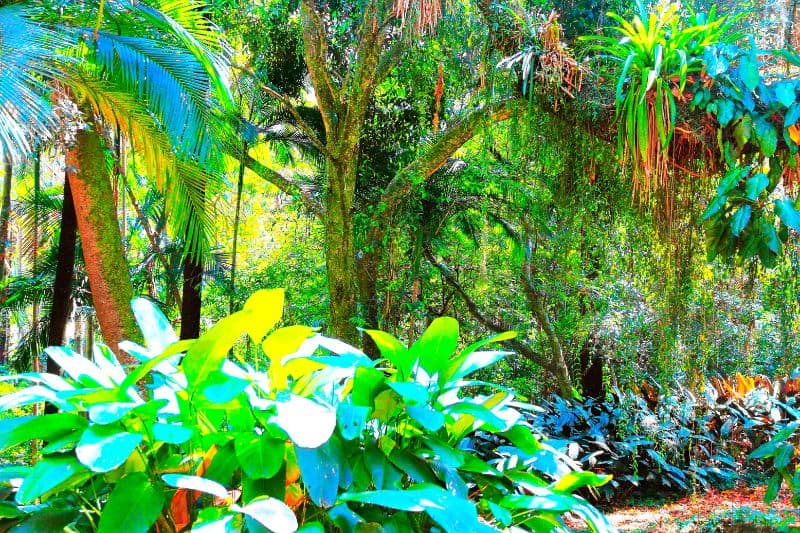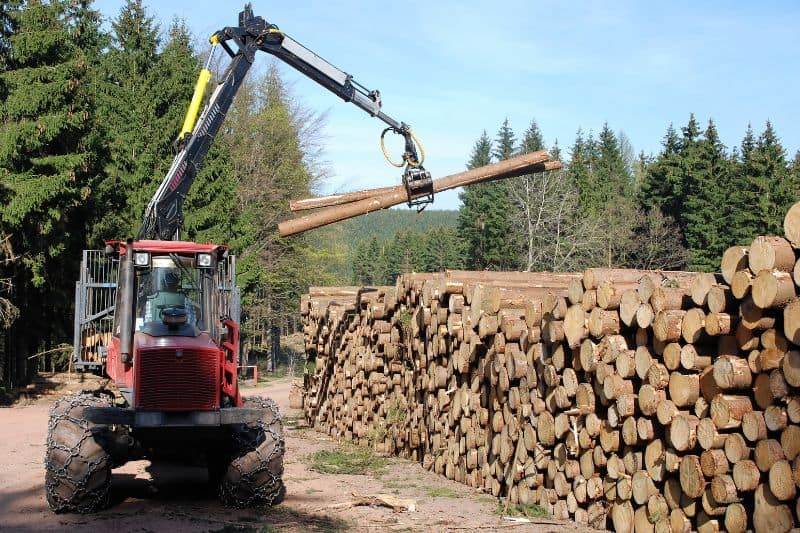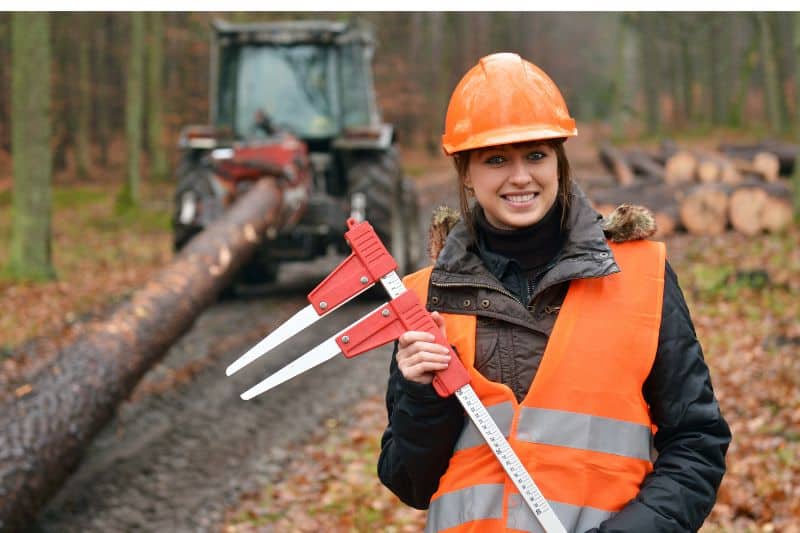Social forestry refers to the management of forests for the benefit of local communities. It includes aspects such as forest management, forest protection, and afforestation of deforested lands with the objective of improving rural, environmental, and social development.
Unlike other forestry projects, in the setting of social forestry, the needs of local communities come first.
For this reason, the main goal of social forestry is to grow trees and plantations to meet the growing needs of people in reference to increased demand for timber, wood, food, fuel, and food to reduce the pressure and dependency on traditional forest areas.
The practice also aims to protect agriculture from adverse climatic conditions by improving the environment, increasing the natural beauty, and increasing the supply of forest produce for local use.
Although the concept and practice of social forestry have existed for centuries, it is constantly gaining a new dimension because of its benefits, including its potential for tackling the challenges of global warming. Here, the benefits and types of social forestry are explained in detail.
Benefits of Social Forestry
Of course, social forests come with numerous merits. Some of them include:
1. Increased Biodiversity

Growing trees in barren lands within the community helps to increase biodiversity value. As trees grow larger, the nature of the habitat will change. Well-managed forests encourage biodiversity as they offer habitation for various animals, plants, shrubs, insects, and birds, among others. In nature, wherever there are trees, other plants and wildlife follow.
In social forestry, trees and associated plants become the source of food and shelter for various small animals and birds.
Furthermore, mature trees create an environment that encourages the growth of other plants that would otherwise not exist, thereby increasing food varieties for animals and the local people.
2. Carbon Removal – Trees Act as Carbon Sinks!
In the fight against the global warming effect, trees play an essential role in removing carbon from the environment. Trees use carbon dioxide when growing and, thus, removing it from the environment.
Social forestry is seen as the best way to reduce carbon dioxide in urban settings. Trees’ energy-saving effect also indirectly lowers carbon dioxide emissions by reducing the demand for power.
It is estimated that planting 100 million trees would help save 22 billion kilowatt-hours and about 33 million tons of carbon dioxide annually after ten years, according to a 1990 study by Akbari and others.
However, it is worth noting that the actual amount of carbon dioxide removed from the air depends on the types of trees and vegetation in the forest.
Alone, a mature Bradford pear can store up to 306 kg of carbon dioxide in its aboveground biomass. Trees help reduce carbon dioxide by acting as a carbon dioxide sink and reducing energy use.
It can also help improve temperatures in some areas, with neighborhoods well-covered with trees exhibiting a 6 to 10 degrees cooler climate than areas without tree cover.
3. Soil Conservation
Another critical benefit of social forestry is soil conservation. Communities that embrace social forestry enjoy significant benefits in terms of improved agricultural activities. Tree roots prevent soil erosion by holding soil in place, mitigating the negative effects of soil erosion.
In a medium-sized city, planting trees in parks and along paths and roads can help save up to 10. 886 tons of soil annually. It is also worth noting that trees reduce soil erosion by reducing the impact of raindrops on barren surfaces.
Decaying tree leaves also help form an organic layer on the ground that makes the soil rich while also allowing water to percolate into the soil, reducing the likeliness of runoff and soil erosion.
Plus, fallen leaves act as mulch, reducing evaporation. Roots also reduce soil compaction, increasing the rate at which rainfall infiltrates soil as well as the capacity of soil to store water, reducing the likeliness of overland flow.
4. Health Benefits

The effects of trees and nature on human health are well-researched. Trees and nature are natural remedies for stress and anxiety. When people are stressed, they usually take a walk in the parks and other nature trails for the calming effect.
Therefore, bringing trees to human habitats can improve health and general well-being. It is also becoming common to find hospitals growing trees due to the healing effect of trees.
Studies have shown that hospital patients with a view of trees outside their windows can help them recover faster and with fewer complications.
Trees also absorb tailpipe pollutants that can have a negative effect on people’s health, such as carbon dioxide, nitrogen oxides, volatile organic compounds, and particulate matter. Traditionally, trees and forests have been a source of medicinal value for communities around the forest.
5. Community Enrichment
Trees make the neighborhood more attractive and more serene. In fact, an area with abundant trees attracts newcomers more than an area without trees.
Furthermore, properties in an area with an abundance of trees are more valuable than those without trees. Trees create shade that helps improve the longevity of outdoor furniture and even pavement.
Studies have shown that providing 20 percent shade can help improve the condition of your pavement by up to 11 percent, resulting in up to 60 percent savings in resurfacing costs. It is also worth noting recreational areas that are well stocked with trees can help keep the community together at home.
6. Noise Reduction
Noise is a big trigger of anxiety and stress. Loud noises can disrupt sleep, affect how people relate with others, and even cause illness. In fact, prolonged exposure to high levels of noise and noise pollution is considered a major cause of hearing loss.
Although rules and regulations are being put in place to reduce noise pollution in many nations across the globe, embracing social forestry in urban areas can mitigate the effects of noise pollution.
Trees reflect and absorb sound energy, reducing noise pollution. Furthermore, the noise of trees caused by branches and leaves as they swirl on a windy day helps to mask man-caused sounds, reducing the negative noise.
7. Improve Air Quality

Although most people relate trees with the removal of carbon dioxide from the environment, it is worth noting that trees also help to clean and improve the quality of air.
An acre of trees is adequate to generate enough oxygen for up to 18 people. Trees also absorb gaseous pollutants that negatively affect people’s health, creating conditions such as asthma and breathing difficulties.
Particularly, trees help clean the air by absorbing gaseous pollutants into their leaves and trapping and filtering particulates on and through their stems, leaves, and twigs.
Some of the pollutants that trees can control include carbon monoxide, sulfur dioxides, nitrogen oxides, carbon dioxide, ozone and small particulates that are less than 10 microns in size.
8. Energy Conservation and Reducing Overall Atmospheric Temperatures
Trees act as natural air conditioners. The evaporation from a single tree can have the same cooling effect as ten room-sized residential air conditioners operating 20 hours a day.
Planting two or three trees in the compound can shade your home from the hot sun, eliminating the need to cool your home and, thus, lowering the energy needed to heat the house.
In addition, trees can also make good screens and act as windbreaks when placed in the path of the prevailing winds, improving heating efficiency.
9. Social Benefits
Trees are associated with various social benefits that make the neighborhood more attractive and valuable. Social forestry helps to create inviting and cool areas for relaxation and recreation, such as parks and playgrounds. Trees also add exciting color and beauty to the neighborhood as seasons change.
The color green creates a calming effect and helps relieve eye strain, contributing to the wellness of the community. Trees also help to screen unattractive views and soften the harsh outline of metal, masonry, steel, asphalt, and glass. Trees also encourage interaction with neighbors by providing areas where people regularly meet.
Types of Social Forestry
Some of the common types include but are not limited to the following:
1. Agro-Forestry
Agro-forestry involves the growth of trees and agriculture in the same setting to provide landowners with agricultural and tree products on a commercial basis.
The objective of the agro-forestry is to gain positive interactions between the two systems. The systems can be separate or fully physically integrated within a single business enterprise.
This type of social forestry is ideal for an individual looking to venture into farm forestry while maintaining the existing agricultural enterprise. It also offers businesses economic benefits, social benefits, and increased productivity, as well as the provision of ecological goods and services.
2. Farm Forestry

The farm forestry setup aims to manage trees for a specific purpose within a farming context. The common purpose is usually timber plantations on private land, but the setup can be applied to a range of enterprises that are managed in various ways using different parts of the trees.
Farm forestry offers many benefits that include shelter and pasture for animals, additional diversified earnings, improved living environments, an increase in the capital value of the plantation, improvement and maintenance of soil and water health, sustainable management of natural resources, and increases in biodiversity.
3. Extension Forestry
Extension forestry is increasingly becoming common in urban centers and most living estates. It involves planting trees on the sides of canals, roads, railways, and wastelands. This type of social forestry is beneficial in creating forests on the common village lands, panchayat lands, and government wastelands.
4. Community Forestry
Community forestry refers to the management of communal land. The village members collectively decide and implement projects on the communal land. The local population takes part in the planning, managing, and harvesting of forest crops.
The population also shares a proportion of the socio-economic and ecological benefits from the forest. The purpose of community forestry is to increase the involvement and reward for local people. It also seeks to provide a balance between outside and community interests.
References:
https://sustainabledevelopment.un.org/partnership/?p=11969
https://www.recoftc.org/social-forestry-knowledge-tree/what-social-forestry






